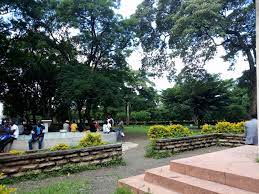Nakuru County is prioritising the protection of green spaces when planning infrastructural development to conserve the environment.
The devolved unit’s administration has indicated that green spaces are vital in curbing air pollution, which is one of the world’s leading health hazards.
Nakuru City Manager, Mr. Gitau Thabanja, has said that the county’s urban planners were designing urban centres with open and green spaces which act as carbon absorbers, air fresheners, and recreational facilities.
“Human activities are causing environmental degradation in our cities and towns, and we should thus look for solutions urgently,” said Thabanja.
He linked pollutants and heating to health issues in cities and highlighted the importance of creating liveable, equitable, and enjoyable urban environments for residents.
Kenya’s urban population has grown at a rate of four per cent, as reported by UN-Habitat in 2022.
Since independence, the urban population has increased from 12 per cent to 29 per cent of the total national population. Currently, around 16 million people out of a total population of 55 million reside in urban areas.
Speaking when he launched a weeklong tree planting and clean-up initiative at Tumaini House School in Baruti East Ward, the City Manager observed that cities and towns were typically a few degrees hotter than their surroundings because of heat released by fossil fuels and absorbed by infrastructure such as asphalt roads and concrete car parks.
He advised modern city planners to emphasise interspacing green spaces and water bodies with regular infrastructure development to mitigate atmospheric heating and trap carbon emissions.
“Burning fossil fuels has made heat waves increase and become more common. People are just starting to realise that we are dealing with another beast: the heating of urban centres.
We need to replace our road surfaces with permeable road surfaces, create strategic water bodies, and plant a lot of trees to lower temperatures,” he emphasised.
Thabanja expressed concern that when Kenyans see open spaces in towns, they consider them as “wasted land”.
“With climate change increasing the intensity and frequency of heatwaves, urban planners, developers, and Kenyans must start appreciating the need to have undisturbed spaces,” he stated.
He explained that the county government’s administration had kicked off the city-schools green and clean programme that seeks to inculcate an environmentally conscious culture among pupils and students, making them green ambassadors for a resilient, healthy, and friendly city.
The City Manager noted that after the gazettement of air quality regulations, the National Environment Management Authority is currently implementing the law targeted at stationary polluters such as industries and other enterprises and that the agency is working on modalities to address mobile polluters such as vehicles.
Thabanja announced that the county government is seeking collaboration with the business community to set up an electric-powered Bus Rapid Transport system.
“This will improve mobility in a city whose mantra is ‘a modern city enhancing quality of life and promoting economic prosperity’,” he stated.
He added, “I envision a city with world-class green amenities which guarantee our people good health and promise sustainable development to our future generations, out of clean air interventions such as an efficient green transport system and a waste management system that emphasises the three principles of reduce, re-use, and recycle,” added the city manager.
Thabanja observed that the 21st century has witnessed rapid and transformative urban development fueled by both social-economic and political factors.
He indicated that while urbanisation has come with an array of opportunities, many cities worldwide are increasingly grappling with challenges such as air pollution and traffic congestion, raising concern about how the quality of life for people living in cities will be in the future.
Data from the United Nations Habitat Index indicates that cities consume 78 per cent of the world’s energy and produce 60 per cent of greenhouse emissions.
It is in light of these statistics that the role of green spaces in reducing the impact of climate change becomes critical and urgent.
Green spaces are defined as any vegetated land or water within an urban area that is undeveloped for purposes of offering a conducive environment for people to play, relax, or even work.
Nyayo Gardens, Lions Gardens, and Hyrax Hill are some of Nakuru’s notable green spaces that are described as the lungs of the town as they provide a carbon sink for the city.
With the UN-Habitat revealing that health mechanisms remain a critical aspect of sustainable living, now is the time to see how green spaces could be utilised for better health.
Thabanja pointed out that prioritising open spaces in cities would be important in managing health aspects such as stress and enhancing social relations.
By Anne Mwale





